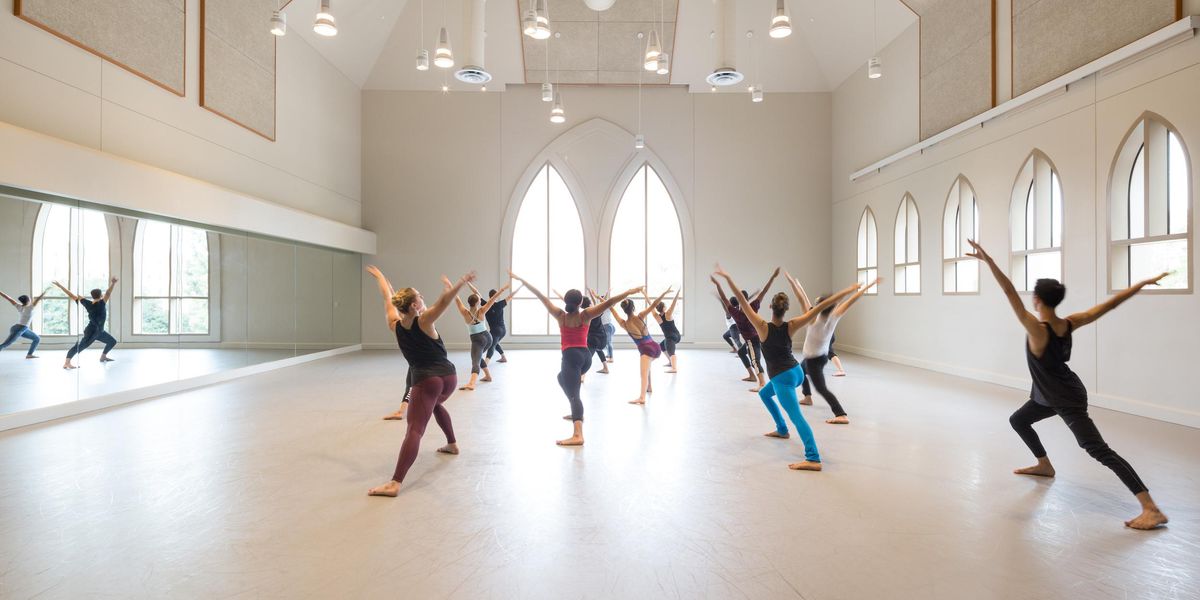Plugged In
Peter for Pina book; ABT, Kansas City Ballet, and Ballet Austin iPhone apps; free performance footage at ARTE LIVE WEB; Tribute to Jerome Robbins: Paris Opéra Ballet DVD
Books
Peter for Pina
Published by Tanztheater Wuppertal Pina Bausch GmbH.
368 pages, about 500 photographs.
German/English/French leaflet. €68.
www.tanztheater-wuppertal-shop.de
.
Pascal Merighi in Bausch’s
Rough Cut, with set by Pabst. Photo Jong-Duk Woo, Courtesy Tanztheater Wuppertal.
For many viewers, the remarkable stage sets in which Pina Bausch’s dances unfold define each work’s character as distinctly as the choreography. It’s hard to imagine Nelken without its vibrant carpet of pink carnations or Vollmond without its shallow river and massive, gleaming boulder.
To celebrate the extraordinary collaboration between Bausch and Peter Pabst, who designed her productions from 1980 until her death in 2009, the Tanztheater Wuppertal has published an engrossing book, Peter for Pina. “It was originally Pina’s idea to make a book about the stage designs,” Pabst declares. “A kind of gift from Pina to Peter.”
Because words can capture so little of the theatrical alchemy they achieved together, the book documents their work in magnificent photographs, none of which is immediately identified. Some show the dancers in action. Some show a set alone, waiting expectantly onstage or in Pabst’s drawings. Some are in color. Some unfold outward, doubling our view.
Three large pamphlets—one each in English, French, and German—accompany the photographs, placing the striking images in the context of their painstaking creation. We learn most about the process from a long interview between Pabst and the film director Wim Wenders that explores the gradual emergence of each production’s design. “We never talked about it beforehand,” Pabst says, “how something could come to be…There should be, must be an entire adventure, a journey of discovery.”
Pina Bausch and Peter Pabst, collaborators for almost 30 years. Photo courtesy
Tanztheater Wuppertal.
Intimately familiar with the repertoire, the speakers focus on practical matters as well as artistic ones. “All my thoughts begin with the floor,” says Pabst, whose concerns naturally included each set’s safety, cost, weight, and maintenance. Yet Bausch’s imaginative vision, though often unstated, guided his ultimate decisions.
In additional material Pabst condenses his 29-year history with the Tanztheater into a single sentence: “A rule of thumb when working with Pina was to accept that you didn’t know where the piece was going and to never despair that there would be an outcome.” Succeeding those selections, thumbnail reproductions of the photographs, with captions, allow us to connect the larger images to the relevant productions. So in the pamphlet’s last pages, the book’s several elements finally coalesce, just as Pabst’s ideas eventually did with Pina’s. —Barbara Newman
iPhone Apps
American Ballet Theatre
has launched an iPhone app, so you can stay up-to-date on casting, news, and upcoming performances while you’re on the go. Find out which ballets are being performed where, optimized for your homescreen. Because ABT is a company of stars, one of the app’s best features is that you can view the calendar of upcoming performances by principal dancer (and easily click through to purchase tickets). Also included are full-screen backstage photos by dancer Renata Pavam (see “Through a Dancer’s Lens,” June). Available at the App Store for $1.99.
Kansas City Ballet
also has a company app that puts the interactive experience—linking its content to the user’s Twitter and Facebook accounts—front and center. Like ABT’s app, you can share upcoming performances and invite your friends to them. Free.
Ballet Austin
’s app gets high marks for functionality and beauty. Its intuitive interface features image galleries from all the season’s ballets, as well as behind-the-scenes videos linked from BA’s well-produced YouTube channel. So even if you can’t make it to Austin to see the company, there is plenty to experience at your fingertips. Free.
—Kina Poon
Websites
View Maliphant’s
Rodin Project at ARTE LIVE WEB. Photo Laurent Philippe, Courtesy Maliphant Company.
As technology improves, more dance is making its way to screens everywhere. But usually you have to pay to stream high-quality video. ARTE LIVE WEB, a division of European public-service cultural television channel ARTE, shares dance performances from major venues in France and Germany for free. Recent shows include Russell Maliphant’s Rodin Project, in which sculptural qualities are expressed through hip-hop, and Les Ballets de Monte-Carlo in Jean-Christophe Maillot’s spiritual Altro Canto 1. Both shadows and people dance in Saburo Teshigawara’s Mirror and Music, and Carolyn Carlson’s Inanna highlights the power of her female dancers. The catch is that you need basic French or German—or to employ a translation site—to navigate ARTE LIVE WEB. See www.arteliveweb.com. —K.P.
DVDs
Tribute to Jerome Robbins: Paris Opéra Ballet
BelAir Classiques. 111 minutes. $29.99.
Jerome Robbins must have loved the Paris Opéra Ballet. He personally staged 12 of his ballets for them, matching his passion for precision with the elegant clarity that defines the company’s style.
Filmed in performance at the Palais Garnier, three of those works document the remarkable scope of his choreographic genius. En Sol (In G Major) evokes a sunny beach where a group of young friends cavort and flirt, mimicking the dappled water with their wheeling arms and flickering feet. Like a moonlit coda to his Dances at a Gathering, In the Night draws the essence of romance from Chopin’s haunting nocturnes. One by one, three couples explore the tremulous tenderness of young love, the rooted satisfaction of mature love, and the stormy disagreements that can disrupt even the most settled relationships.
Robbins took a more lighthearted view of Chopin’s output in The Concert, in which he transforms a piano recital into a collection of comic vignettes. Having deftly sketched the recital’s audience, he then pinpointed their private responses to the music and each other. Often called the “Mistake Waltz,” one episode spoofs dancing itself as six women reduce a neat pas de six to chaotic confusion; another turns the possibility of rain and a forest of umbrellas into a sly comment on conformity.
Alongside these miniatures of incisive observation, Benjamin Millepied’s new Triade looks like an exercise in moody modernity. Four dancers invade a dark, empty space, eyeing each other cautiously. They dance alone, in couples, in trios, sometimes seductively, more often grappling like antagonists. Although Millepied credits Robbins as his inspiration, nothing about the jittery, angular vocabulary, the miming of whispered conversations, or the constant rushing to and fro even hints at Robbins’ mastery of space and physical expressivity.
Instead of moving us closer to the choreography, the director, Vincent Bataillon, chose to capture most of Robbins’ ballets in long shot, so we can seldom discern the performers’ faces. But perhaps that doesn’t matter. Except in The Concert, the company’s perfectly polished delivery scrubs those works clean of texture and deprives them of emotional nuance. Long-limbed, beautifully turned-out, confident, and sleek, these dancers present themselves impeccably, but I longed to see their individual qualities as well as their uniform excellence. —B. N.
Top: Marie-Agnès Gillot and Florian Magnenet in Robbins’
En Sol. Bottom: Benjamin Pech and Clairemarie Osta in Robbins’ In the Night. Photos by Sébastien Mathé, Courtesy Naxos





